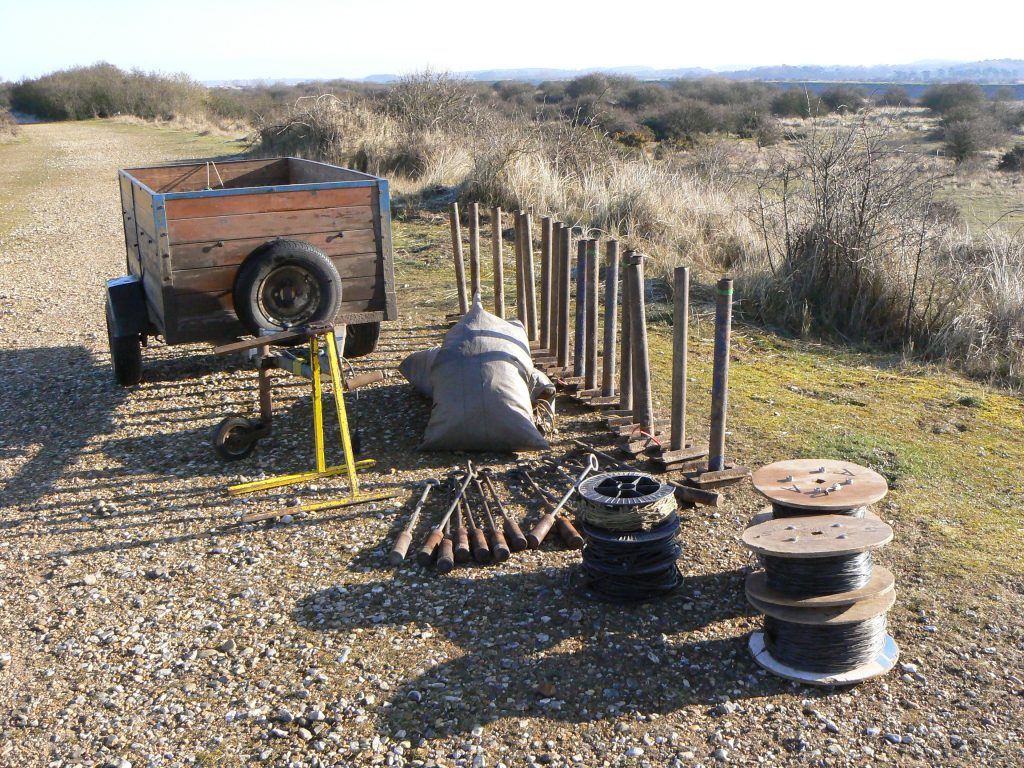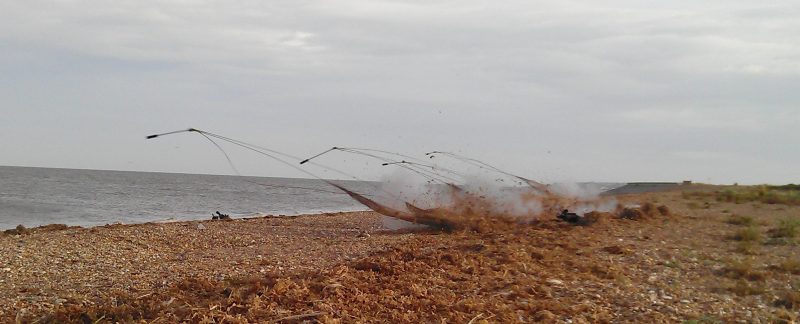I have been working towards my cannon-net endorsement for just over two years, aiming to get to as many cannon-net catches as possible to gain experience in different kinds of scenarios, catching different species and being out in the field with various licence holders. Work, travel and home life often curtail the number of catches I would like to attend and up to now, due to the nature of my work, most of the cannon-net catches I have been involved in have been focussed on catching wildfowl species such as Bewick’s Swans, Pink-footed Geese and Red-breasted Geese. During September 2018, I was fortunate to find myself heading to China to assist global efforts in learning more about the Critically Endangered Spoon-billed Sandpiper and it was on this trip, led by Wash Wader Ringing Group (WWRG) members, that my eyes were opened to the cannon-netting and ringing of wader species. For the first part of the trip, I was literally like a ‘duck out of water’ as I watched in awe the experienced team go about the planning, catching and processing of large numbers of Asian wader species.
After this trip, an e-mail landed in my inbox from Nigel of WWRG inviting me to attend a weekend course being held by the Group. The idea being to bring together a number of people who are currently working towards their endorsements, and some who have recently received them, with a group of very experienced endorsement-holders. Put all these people in the same room, have a set programme, share ideas and thoughts and all things cannon-netting were to be discussed over the weekend!
So I found myself leaving WWT Slimbridge and heading over to The Wash to partake in this training course. After a short drive around Terrington, I spotted the Grey Plover WWRG sign that heralds your arrival at WWRG HQ. Inside, those running the course along with other trainees warmly welcomed me.
The next day, a 9 am start (perhaps somewhat leisurely for a bird ringer!) saw the training course get underway with each of the current licence holders taking a lead on a section of the course. An introduction to cannon-netting was provided – discussing the need for cannon netting, how licencing works, as well as leadership and delegation of teams, safety and public relations which were all covered.
In the equipment store, Lucy went through the equipment used during cannon-netting from pegs to jigglers, up to the actual cannons and nets, discussing the types of nets used and giving scenarios on the appropriate mesh size to be used in different circumstances. Richard then provided an overview of ‘electrics’ and quizzed the delegates with short ‘exam’ questions at the end to make sure we were all paying attention.

Other sections of the course included deciding where to set nets, the setting of nets, operating, and firing. In the afternoon, we headed out to nearby fields where we set several nets for test fires under the guidance and lead of the endorsement holders. On the second day of the course we discussed what happens when a catch has taken place, keeping the birds safe, the holding of birds prior to processing and tasks needing to be completed after the last birds had been released. Each trainee had the opportunity to have a one-to-one with a current endorsement holder to discuss improvements, areas where further work was needed in training and to ask any further questions.
No catching took place over the weekend, allowing us to discuss various scenarios and questions in detail and in a relaxed manner that would not be achievable during a live catching attempt. Overall, I found the course to be of great use to my training, and all trainees left having felt the course greatly improved their understanding of cannon-netting as a whole.
My thanks go to the endorsement holders for initiating and running the training course – Nigel, Jacquie, Richard, Phil, Lucy and Ros. To the other cannon net trainees – Guy, Ryan, Gary, Louise and Lizzie. With all of our grateful thanks to Cathy for providing tasty food throughout the weekend, allowing the course to run unhindered and allowing those attending to have full bellies!
Kane Brides
Wildfowl & Wetlands Trust (WWT)

